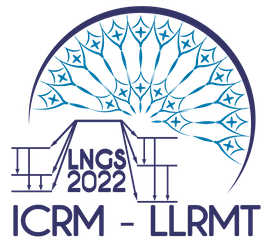Speaker
Description
Decommissioning of nuclear facilities involves the assessment of the radioactivity inventory for, among others, waste classification and temporary storage. For nuclear fission reactors, apart from the reactor core, the main contribution to the radioactivity comes from the graphite, if present, and the construction materials (concrete, metal materials such as aluminium alloy, steel, and lead). For nuclear fusion reactors, the main contribution comes from activation products and tritium.
Among the most occurring radionuclides, 63Ni and 55Fe (neutron activation products) are significant in both fission and fusion reactors and considered as hard-to-measure-radionuclides because of their characteristic emissions.
63Ni is a pure beta emitting radionuclide and can be produced by the following neutron reactions: 62Ni (n, γ)63Ni and 63Cu (n, p)63Ni. 55Fe decays via electron capture to stable 55Mn with the emission of Auger electrons and low energy X-rays, it is produced by the neutron activation reactions 54Fe (n, γ)55Fe and 56Fe(n,2n)55Fe.
Due to their low energy beta particles and electrons, only destructive analysis can be carried out for 63Ni and 55Fe activity determination, in particular, liquid scintillation counting (LSC) is the most suitable method. This work focuses on destructive characterization analysis of steel materials coming from research reactors, in those cases in which the activity level is very low, close to the unconditional release level determined by the Authority. To achieve the minimum detectable activity concentration in accordance with the Authority request in a reasonable time, a preliminary study on the variation of measurement efficiency against the sample concentration is necessary.
The sample concentration in the LSC vial is strictly connected to the quenching, particularly to the colour quenching. Small sample amounts produce a low quenching effect and high detection efficiency. On the other hand, the lower the fraction of the original sample is mixed with the scintillator, the higher the minimum detectable activity concentration, along with the acquisition time. The goal of this study is to quantify the correlation between sample concentration and measurement efficiency with the aim to optimize the measurement time.
In this work, the preliminary results of the study will be illustrated in the case of a steel sample from decommissioning of a research fusion reactor.

